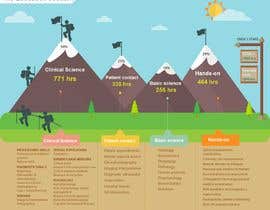Usual Day-To-Day Behaviors That Create Neck And Back Pain And Tips For Staying Clear Of Them
Usual Day-To-Day Behaviors That Create Neck And Back Pain And Tips For Staying Clear Of Them
Blog Article
Web Content Writer-Bates Vogel
Preserving correct posture and preventing common pitfalls in everyday tasks can dramatically affect your back health. From how you rest at your desk to just how you raise heavy things, tiny changes can make a big distinction. Picture a day without the nagging neck and back pain that prevents your every step; the service may be less complex than you believe. By making a few tweaks to your day-to-day practices, you could be on your means to a pain-free presence.
Poor Posture and Sedentary Lifestyle
Poor posture and an inactive way of living are 2 major factors to neck and back pain. When you slouch or hunch over while resting or standing, you placed unneeded pressure on your back muscles and back. This can result in muscle mass imbalances, tension, and at some point, chronic back pain. Furthermore, sitting for long periods without breaks or physical activity can deteriorate your back muscle mass and bring about tightness and pain.
To combat bad posture, make an aware effort to rest and stand up straight with your shoulders back and aligned with your ears. Remember to keep your feet flat on the ground and prevent crossing your legs for prolonged periods.
Including regular stretching and enhancing workouts into your everyday regimen can also help boost your stance and minimize back pain associated with a less active lifestyle.
Incorrect Training Techniques
Incorrect lifting techniques can considerably add to pain in the back and injuries. When you raise hefty items, remember to flex your knees and utilize your legs to lift, instead of counting on your back muscle mass. Avoid twisting your body while lifting and keep the object near your body to minimize stress on your back. It's essential to maintain a straight back and prevent rounding your shoulders while lifting to avoid unneeded stress on your spinal column.
Constantly assess simply click the following page of the things before lifting it. If it's as well hefty, ask for aid or usage tools like a dolly or cart to transfer it safely.
Remember to take breaks throughout lifting jobs to give your back muscle mass a chance to relax and protect against overexertion. By executing correct lifting techniques, you can avoid pain in the back and minimize the danger of injuries, guaranteeing your back stays healthy and balanced and solid for the long term.
Absence of Routine Exercise and Stretching
A less active lifestyle without routine exercise and stretching can considerably contribute to neck and back pain and discomfort. When just click the following web page do not participate in exercise, your muscles end up being weak and inflexible, leading to bad pose and enhanced strain on your back. Routine workout helps reinforce the muscular tissues that sustain your spinal column, enhancing stability and minimizing the risk of pain in the back. Integrating extending right into your routine can also enhance flexibility, protecting against rigidity and pain in your back muscle mass.
To prevent back pain caused by an absence of exercise and stretching, aim for at least 30 minutes of modest exercise most days of the week. Consist of workouts that target your core muscle mass, as a strong core can help ease pressure on your back.
Additionally, take breaks to extend and move throughout the day, especially if you have a desk work. Simple stretches like touching your toes or doing shoulder rolls can assist relieve tension and prevent pain in the back. Focusing on regular workout and extending can go a long way in keeping a healthy and balanced back and minimizing discomfort.
Conclusion
So, remember to sit up straight, lift with your legs, and remain energetic to avoid neck and back pain. By making basic modifications to your daily behaviors, you can prevent the discomfort and constraints that include back pain. Care for your back and muscle mass by practicing excellent posture, appropriate training strategies, and routine exercise. Your back will thank you for it!
